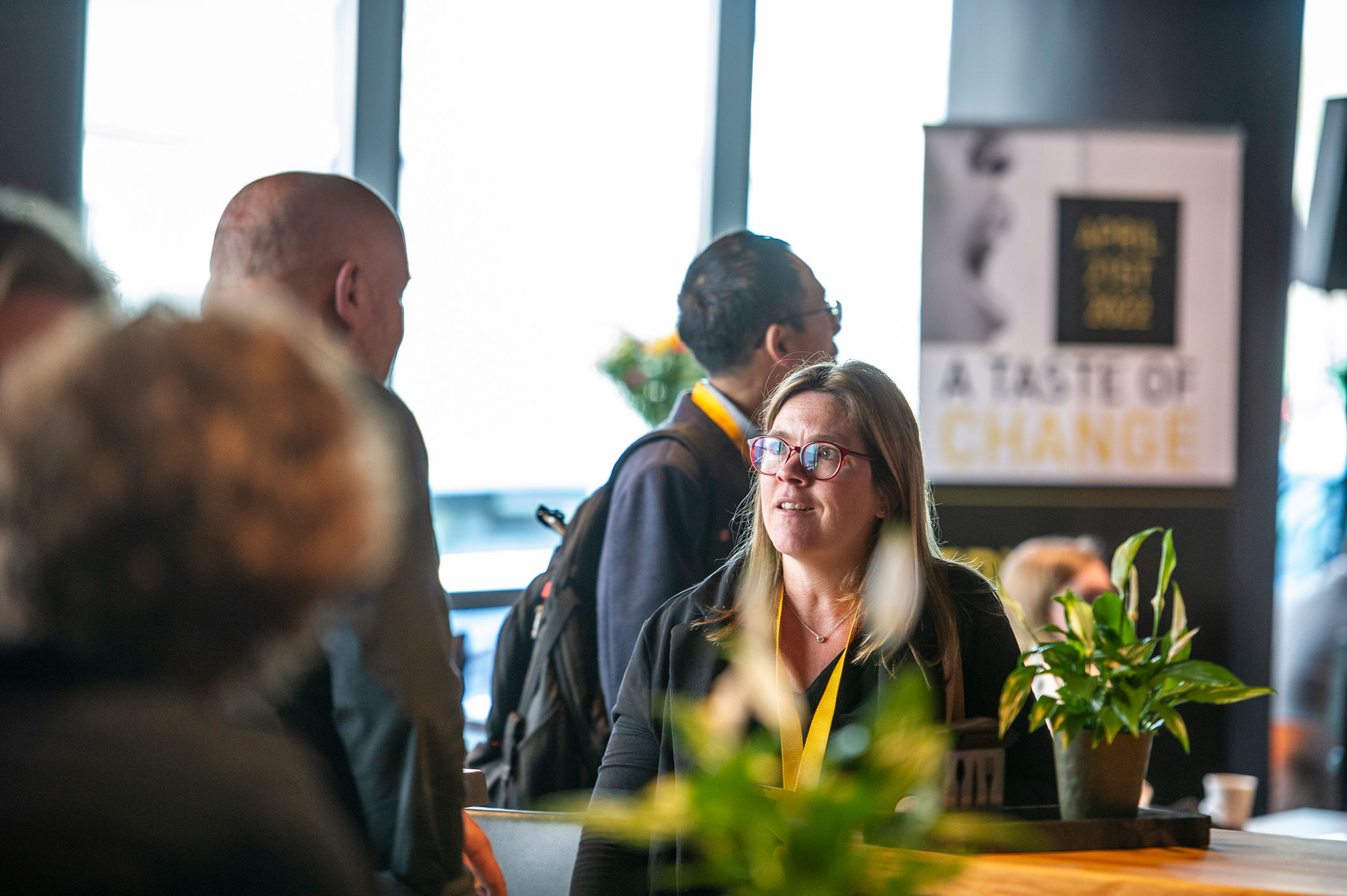Last week, the Food Innovation Academy in Vlaardingen was the unique setting for the Sensory Symposium 2022. Colleague Nele went there as a sensory expert, not only to look at current trends and the influence of Covid-19 on sensory research, but mainly to discover what the role of this research domain will be in the future. What are the challenges and what are the opportunities for sensory research? Discover the importance of the balance between short- and long-term rewards and join Nele in getting a (salty) taste of change in this research field.
The bigger picture
The taste of change in sensory research soon becomes apparent. Where previously the emphasis was on finding the right product, now the focus is on making a product 'healthy & sustainable'. Or in other words: from 'doing things right' to 'doing the right things'.
From now on, the behavioural component will also be explicitly extended in sensory research. The research package will thus be more complete and much richer, as it will take a holistic view of the consumer experience.

It is important to consider everything in its context: the use of a product by a particular person on a particular occasion. No matter how simple or complex the stimuli in research now are, it is important that the 'implicit' behaviour is also measured. The 'un(der)conscious' will therefore be taken into account much more in future research. New tech innovations help in-the-moment research by making this kind of behaviour much more transparent.

Health and sustainability
However, the food industry invariably faces a number of challenges. What these companies will focus on more in the near future is what kind of behaviour consumers will exhibit around certain topics. Let us take a look at the biggest challenges of the future:
Challenge 1: How will consumers balance between values (long term) and immediate reward (short term)?
Challenge 2: How can consumers be persuaded to buy healthy and sustainable products?
During the Sensory Symposium, Unilever came up with some striking reflections on this. Because they are themselves very involved in this and have even built an entire ecosystem around innovation, together with other universities and start-ups for example. With this joint challenge, this collective uses new technologies and methodologies to develop food that fits within a healthy lifestyle and/or contributes to a sustainable food system. The so-called future foods. In doing so, they play on 4 aspects:
-
- Plant-based food
- Less food waste
- Positive nutritional value
- Less calories, salt and sugar
In doing so, they want to build a bridge between short- and long-term solutions. It answers the first challenge where a balance is sought in the benefits consumers experience. It distinguishes between the immediate reward - in this case, the taste experience and the perception in general - of using the product and the reward they will experience in the long term - such as health and environmental benefits.
The user will have to make this consideration himself in order to opt for personal gain or rather to go for a sustainable world, for example, which consequently provides a benefit for others. This consideration makes it even more difficult for consumers to exchange their direct reward for the greater good.
And that is directly related to the second challenge. How do you encourage the use of healthy and sustainable products? It concerns them personally, more specifically health, but also the bigger picture, in particular 'sustainability'. They take it a step further. People don't just have to try the new products, they have to prefer those healthy and sustainable choices.
Do not pour salt on the wound
Products are being tightened up and thus made healthier/sustainable. But how do you communicate that a product has a nutrition improved label? What you want to avoid is consumers thinking that they are sacrificing taste when they choose these products. As a food company, you have to be careful when communicating about the reduction of salts, for example, because people need a good reason to choose products where certain nutrients have been removed or reduced. The way you communicate change is key.
Often, the purchase and use of (food) products involves certain behaviour and habits. A clear example is the reduction of salt levels in specific products. For instance, when it is explicitly communicated that a certain product contains less salt, consumers tend to overcompensate by adding excessive salt themselves. If the reduction in salt levels in certain products is communicated from the point of view of health authorities (e.g. approved by heart association), people are more likely to accept this and therefore add less or no salt themselves. In this way, they opt for the long-term reward of health.
The way change is communicated thus has an immense impact on how the product is used and whether the "why?" is met. So it is better not to inadvertently pour salt in wounds by using the wrong communication approach in the event of a change of taste.

Colleague Nele present at the Sensory Symposium
(source: MOA Expertise Center sensoryforbusiness.nl)
Are you interested to know more about sensory research, and more specifically to see how this impacts your product or brand? Are you curious to know how One Inch Whale can help in increasing sales through optimisation of your product? Feel free to contact us to have a chat.
